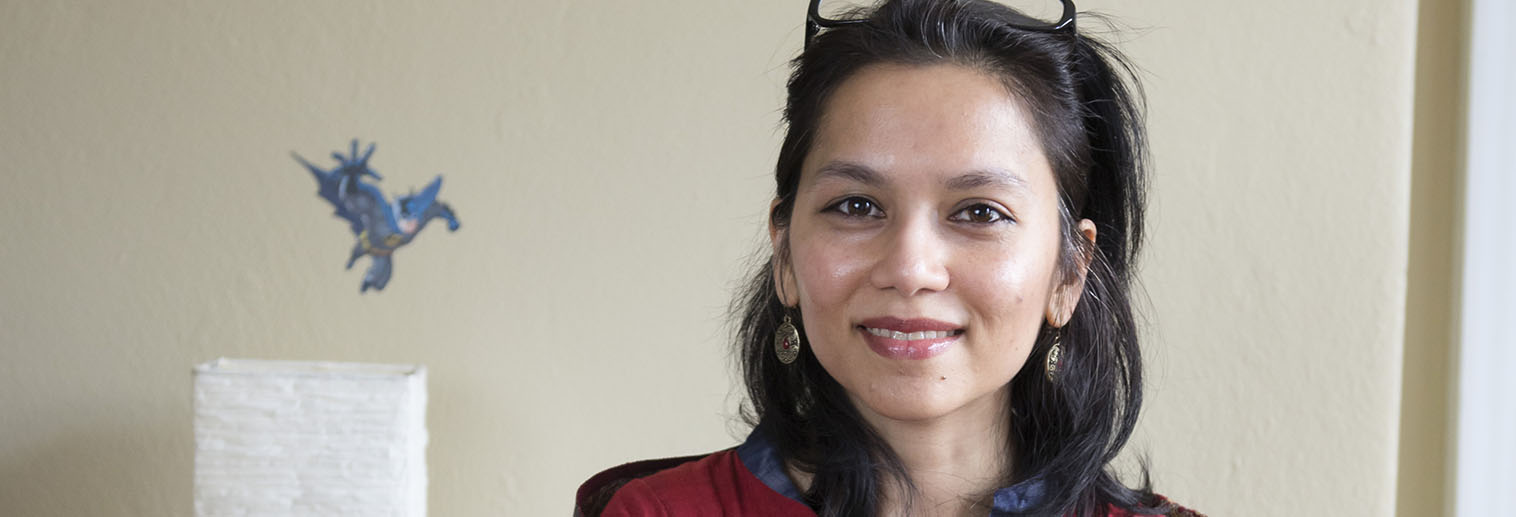Poverty: A Lack of Choices
Sonia Aziz, associate professor of economics, reveals what really leads to results in developmental economics
Sitting at the head of a crowded Snyder Room, surrounded by doctors, deans and professors, Sonia Aziz, associate professor of economics, sticks to what she knows best: educating. Her faculty luncheon, “The Economics of Poverty,” used information from both her own experiences in the field and those of her colleagues to inform her fellow faculty members of the challenges associated with developmental economics.
As co-director of the College’s 2015-2016 InFocus center for investigation, poverty and inequality, Aziz has been actively engaging the campus in various facets of the issue since her arrival in 2008. She is known for her research on arsenic levels in drinking water in Bangladesh, and her talk exposed her audience to the various methodologies and points of view in developmental economics. In a room filled with academic experts across many of the College’s disciplines, Aziz communicated her findings clearly to all.
She described poverty in many ways: she called to mind the lack of education, the poor health of many poor families and the impact that has on children, the difficulty of these families to attain basic sustenance, and how many poverty stricken areas have little opportunity for growth. She didn’t stop there: Aziz distilled the laundry list of characteristics we associate with poverty down to one phrase: “a lack of access,” a void that results in reduced freedoms and fewer choices.
“It seems that a lot of the policy is centered around particular ways of addressing resource-constrained communities, and those particular ways seem sometimes at odds with choice,” said Aziz, who was quick to explain through example. “Richard Nixon had a proposal to get away from welfare and increase income instead, and people didn’t like that. An increase in income increases, in a very specific way, your set choices.”
She revealed the idea of “aid” is oftentimes focused on providing a single thing to a population, rather than giving those in need the freedom to choose what they need for themselves. Because at its economic core, extreme poverty means a lack of choices. “People are more prone to want to feed a starving child than they are to provide a set of choices,” she explained. The use of insecticide treated bed nets in Africa to reduce Malaria fatalities sparked both questions and ideas of solution. “When you look at these examples,” said Aziz, to provide context to each situation, “you are looking at a way to address the issue.” Aziz was sure to answer questions from faculty about the bednets and was quick to brainstorm ideas with the active minds engaged in her talk.
“If you see a drowning child and you are wearing a very expensive suit you are probably going to jump into save the child, but not if you don’t know how to swim,” explained Aziz to a silently attentive audience. She was quick to connect her ideas with these simplistic but powerful examples.
“What is new in development economics is we are starting to test hypothesis in combination with randomized field experiments,” Aziz explained to her peers. “We are starting to do this sort of as an equivalent to randomized drug trials.”
As Aziz moved through her presentation, utilizing images and text (she even drew a price elasticity graph, which she dubbed her “Econ 101 lesson”), she discussed things like sum cost and utility all the while explaining through practical examples and focused explanation. Illustrating the various competing concepts of development economics is not an easy task, but Aziz was able to not only make the information digestible, but also engaging for her peers at one point connecting her talk of demand to Moravian College’s tuition price.
Sonia Aziz is a professor in the truest sense of the word; she is able to transform complex research into ideas for her audience. Her faculty luncheon was without food, but the dialogue she sparked, and the information she brought to the fore made everyone forget about eating. The food for thought Aziz brought to the table was substantial for everyone.
—By Chris Hassay ’17

